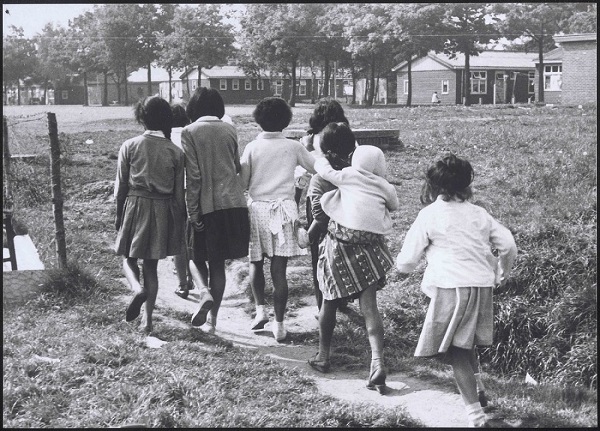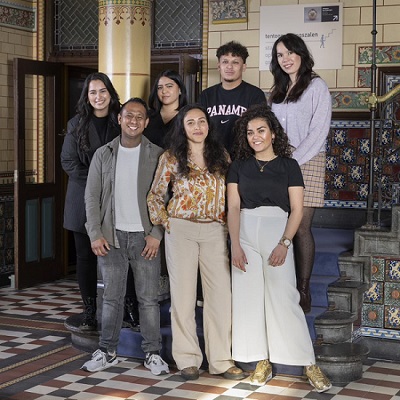On 16 April the exhibition Menyala - The extraordinary history of the Moluccans in Drenthe opens in the Drents Museum in Assen. The exhibition - co-created with seven young Moluccans with roots in Drenthe - sheds a different light on Moluccan history as we usually know it. After the war of independence in Indonesia, large groups of Moluccans came to the Netherlands. Of the nearly 13,000 Moluccans who arrived in 1951, about 3,000 ended up in Drenthe. Most were young and full of dreams for the future. The exhibition Menyala - Malay for 'shine' - uses a hundred objects, videos, photos and spoken word to tell about the pain and sorrow, but also about the ambitions and ideals. It highlights the sensitive past with its raw edges, but also the passion and resilience of the Moluccan community. The exhibition will be on display until 1 October 2023. Tickets are now on sale at the box office and here.
The history of the Moluccans in the Netherlands is inextricably linked to Drenthe. One in five Moluccans ended up in one of the seven settlements in Drenthe. Initially it was thought that the stay would only last a few months, but it soon turned out to be longer. Ideas about the future of the Moluccans sometimes differed widely between the Moluccans themselves and the Dutch government, which took a rather callous attitude. Later the temporary housing was converted into permanent living space in so-called Moluccan neighbourhoods, in Drenthe in Assen, Bovensmilde and Hoogeveen. Dissatisfaction with the treatment by the Dutch government and hopelessness about their future among Moluccan youths led to several violent actions in Drenthe in the 1970s.
Different perspectives
The museum collaborated with seven young people in creating this exhibition. They delved into Moluccan history from different perspectives and went in search of special objects and stories. In the exhibition, they talk in video portraits about the role of Moluccan history in their own lives, what menyala means to them and how they look to the future.
One hundred objects
The exhibition shows why the Moluccans came to the Netherlands and what their lives were like in the settlements. How much effort they had to make to find their way in the Netherlands, what their ambitions and ideals were and how their integration in Drenthe went. On display are exactly one hundred objects with impressive stories from mostly private (Moluccan) lenders from Drenthe. These range from a fragment of the Van Heutsz monument, a chair with the inscription 'Rijks Eigendom’ (‘State Property’), a Puch moped and the FC Amboina sports bag to works of art by Joenoes Ririmasse.
Activity program
Family ties are important within the Moluccan community. That is why Menyala pays special attention to families. There is a Family Festival and a special Family Route (from 18 June). There are also activities for young and old during the May and summer holidays. Young people with Moluccan roots can search for their own family history in the special workshops Tracing Your Roots, organised by the museum in cooperation with the VerhalenOverLeven foundation. There are also 'Te Gast' lectures and a programme for primary and secondary schools

Group of girls at Kamp Schattenberg, 1958, Photographer unknown, collection Drents Museum (click on the photo for a larger view)
Publication
The exhibition will be accompanied by a richly illustrated public book in close collaboration with Waanders Uitgevers in Zwolle. The book explains, among other things, how the Moluccans ended up in the seven settlements in Drenthe and what the Moluccan actions in Drenthe brought about. About how the Moluccans slowly but surely integrated and what development their identity went through. In between, the reader is introduced to the seven young, ambitious Moluccans from Drenthe who form the Menyala working group. They talk about their family history and their ambitions for the future. The publication is for sale for € 24.95 in the Museum Shop of the Drents Museum and via Dutchmuseumgiftshop.nl.









